6 Most Important Aspects of Retail Lighting Design
As part of a study* of the impact of retail lighting design on consumer experience, 80% of the participants – who were aged 20-36 years – stated that visual comfort conditions are of high importance. That group also evaluated the importance of specific aspects of retail lighting with accurate color perception and an appropriate illuminance level ranking the highest.
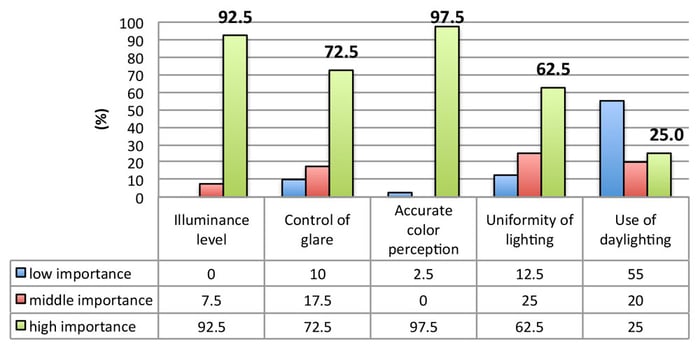
*HUMAN-CENTRIC SUSTAINABLE RETAIL LIGHTING DESIGN APPROACH: AN EXPERIMENTAL STUDY
Dr. Feride Şener Yılmaz, Istanbul Technical University Faculty of Architecture
While the basics of good lighting apply to almost any retail shop, there are some aspects that are critical to selling cosmetics and personal care products in a physical setting.
Please fill out the form to learn how Cooledge can help you choose the best lighting for your retail stores:
Read on to find out the most important things you need to know to make sure the lighting in your stores is delivering the experience that makes your customers want to keep coming back:
1. Immersive Experience Requires Immersive Illumination
The biggest trend in retail design is the creation of “immersive experiences” to draw customers into bricks and mortar shops and provide them with an interaction they cannot get online.
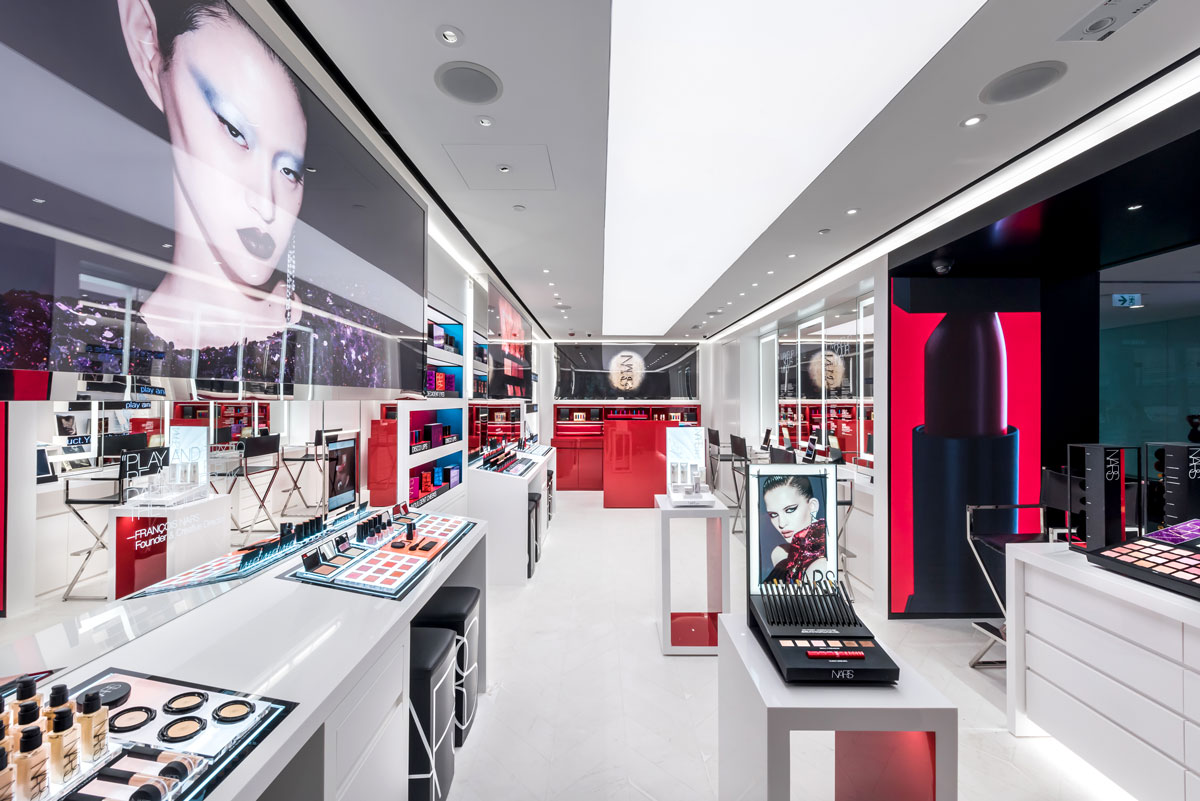
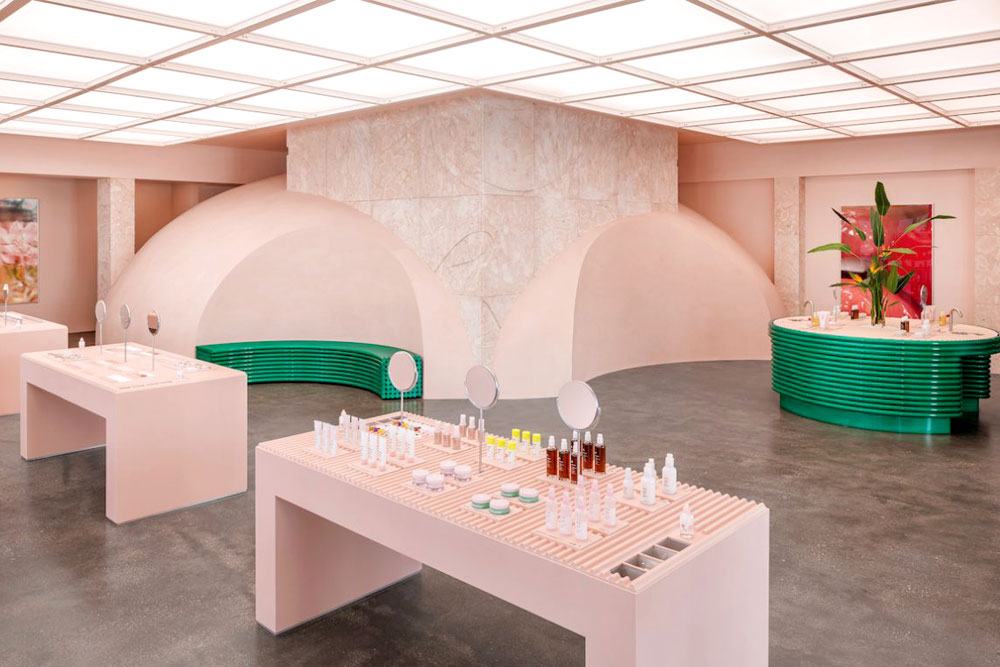
The success of online brands moving into the omnichannel space or those with an established network of physical locations striving to maintain their positions will depend on making the “try before you buy” customer experience more engaging, more comfortable, and ultimately more memorable than staying at home and clicking their way through a barrage of products.
Here is something to think about:
Lighting (and sound) are a huge part of that experience. Immersive illumination encompasses so much more than providing enough light see the merchandise or avoid tripping over things.
Immersive illumination is a subjective experience that starts with recreating the feeling of being outdoors that people crave and combines all of the best qualities of light to affect the way customers feel physically and emotionally, the way they see your products and themselves, and their impression of the shopping experience and your brand.
Immersive illumination incorporates large luminous surfaces along with intentional forms of accent lighting to create an atmosphere that is unique to your brand but universal in its appeal.
What's Important For You To Know
Immersive Illumination combines large scale comfortable illumination with the best qualities of light to create a subjective experience that matches the overall goal of delivering an immersive experience for shoppers.
2. Diffuse Lighting is Beauty Lighting
We’ve all seen halo lights and vanities outlined with lamps. The purpose of this type of lighting is to eliminate shadows and glare. It’s not practical to light a store with these types of light but you can get the same effect by using large, diffuse (“soft”) sources of illumination in the form of luminous ceilings or large area light fixtures.


Beauty photographers know the value of diffuse light and employ various methods to achieve its uniform distribution.

Creative producer Shameless Maya demonstrates the importance of diffuse light in Lighting for Diverse Skin Tones to her 1.2M YouTube followers.
Here are some comments from others:
“Even illumination is the key to creating a comfortable and inviting retail space. This refers to spreading light evenly throughout the store, avoiding dark spots, shadows, and bright spots. Even illumination helps shoppers recognize products easier, increasing the likelihood of sales.”
Contech Lighting: Retail Lighting
“Diffuse general lighting ensures a subjective sense of well-being.” Attention equivalent – a study concerning the effectiveness of specific lighting parameters on the perception and preference of customers in a shop.
Prof. Jan Ejhad, Royal Institute of Technology in Stockholm; Prof. Dr. Roland Greule, HAW Hamburg; Markus Felsch, Felsch Lighting Design
What's Important For You To Know
Diffuse lighting is the primary type of lighting used to ensure customers will look good when trying your products and can be achieved throughout your store by incorporating luminous ceilings or large area light fixtures.
3. Color Rendering is Critical, for Merchandise Displays
It is well known that ensuring apples look the right color of red or a green blouse matches the trending color of the season is an important consideration for lighting merchandise. And is there a retail application where this is more critical than in cosmetics where for many products you are literally selling colors?
Probably not.
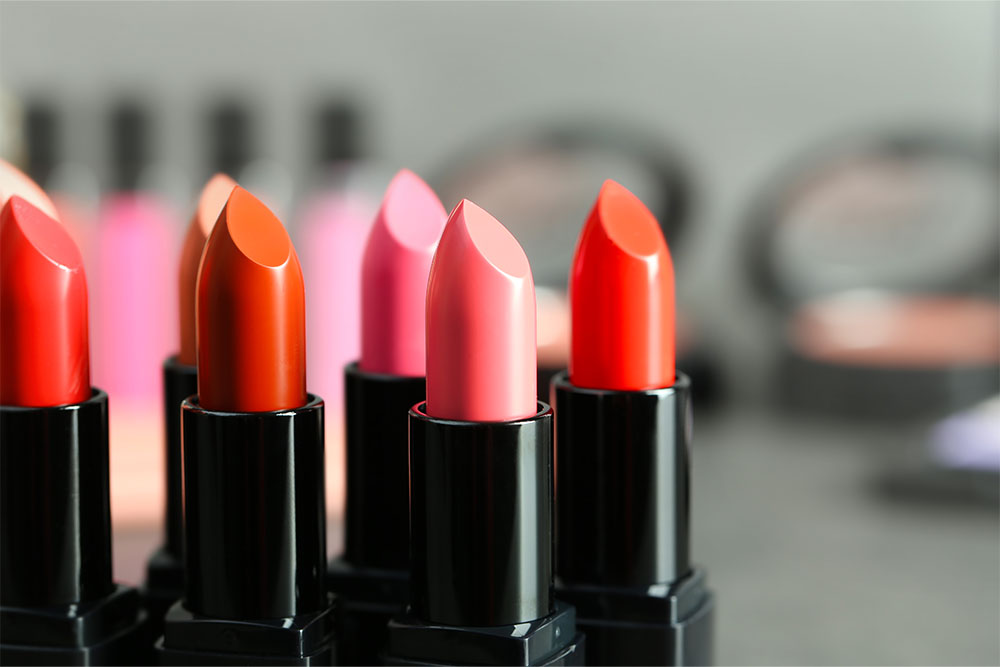
High CRI (>90) lighting ensures colors vivid
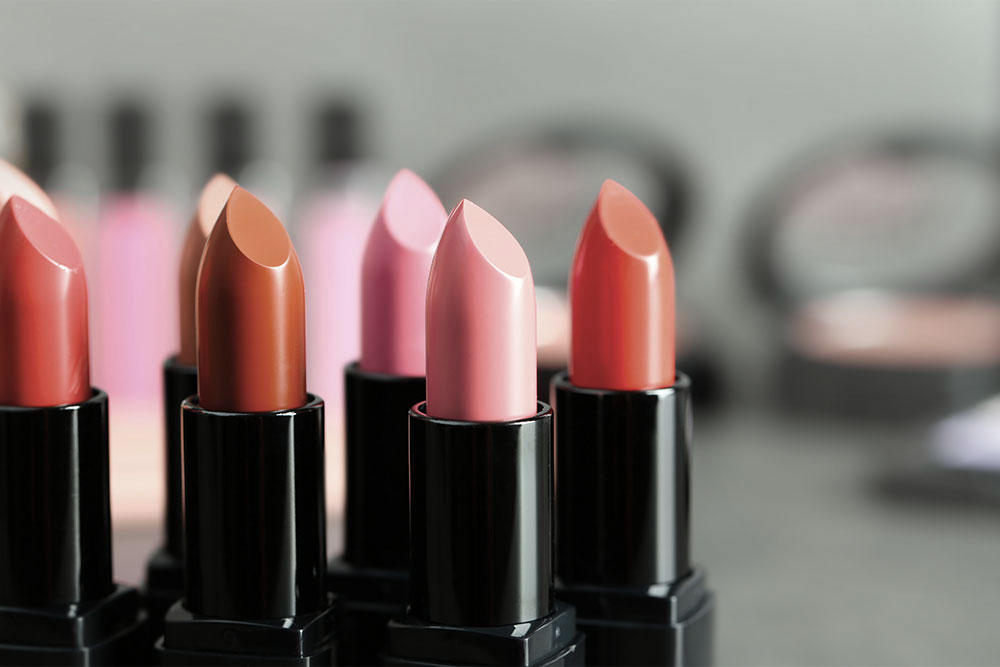
Lower CRI lighting may result in a washed out appearance
There are many lighting products available that do a good job of rendering colors faithfully – in lighting terms they have high Color Rendering Index (CRI) values - on a scale of 0-100. The thing about those products is that almost all of them are spotlights or other “point sources” designed to highlight small areas. By definition, they are not immersive or diffuse.
What if you could get immersive, diffuse lighting that has similar color rendering capabilities to those products specifically designed for the purpose?
You can.
There are luminous ceiling products available from several manufacturers. Not all of them offer high color rendering and some of them can’t even tell you how much light you’re buying. Asking for these details will ensure you are making an informed decision that is critical to the display of your products.
What's Important For You To Know
Color rendering (CRI) is critical to making sure your products are displayed in the best way possible and this attribute of the light should apply to all of the lighting in your stores.
4. R-Values Matter to Make Customers Look Good
The CRI value that we talked about above is a measurement of the overall ability of a light source to render color, but it is important to know something about the way individual colors appear under a light source – especially red. Without getting too technical, the CRI value is a compilation of individual values that measure how well a light source renders specific colors compared to a standard source (daylight for example). These individual numbers are called “R-values”.
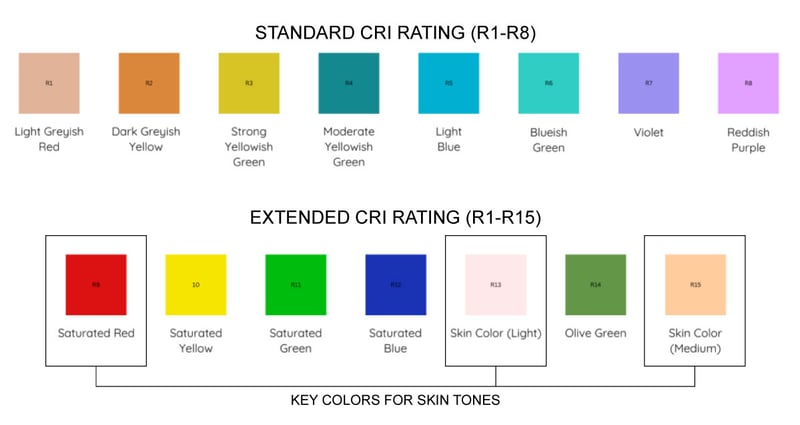
To make your customers look healthier, you should make sure your lighting has high “R-values” for R9, R13, & R15, the three key colors that impact the look of skin tones.
LED lighting that is now ubiquitous and in earlier days, fluorescent lighting, are notorious for not containing enough red (R9) to make people look healthy. You have probably heard of people complaining about the lighting making them look sick – this is likely the culprit.
Red is important because no matter the tone of skin it is the reflection of the blood flowing through it that makes us look healthy. Sick people often look pale because of reduced blood flow or lack of red blood cells. On the other hand, if the lighting lacks red (has a low R9 value) then healthy people may appear sick. Not exactly the look your customers are hoping for when they’re trying your products!
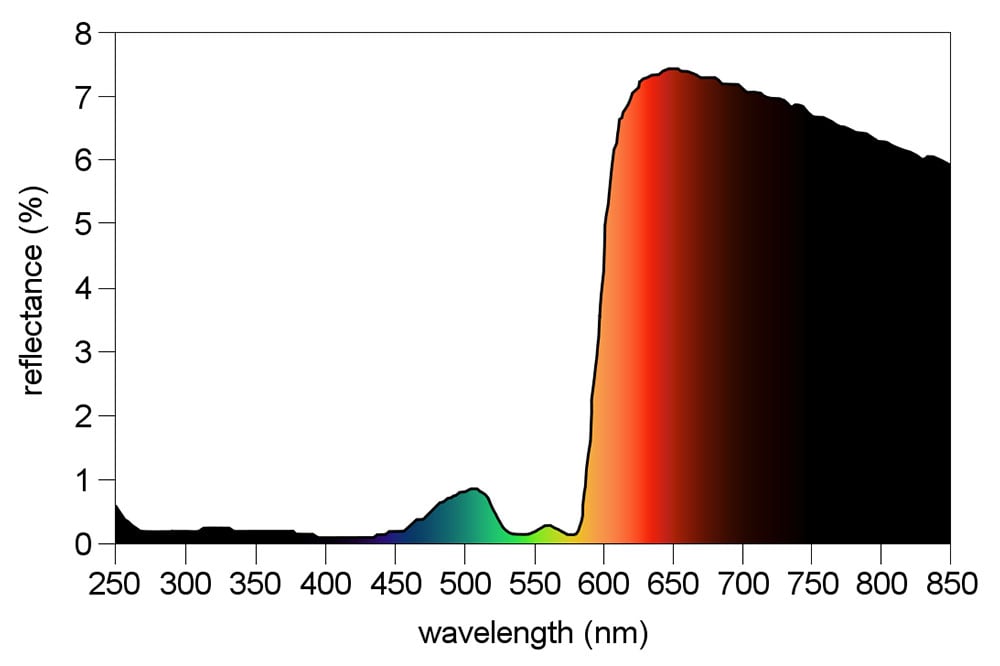
Reflectance properties of blood
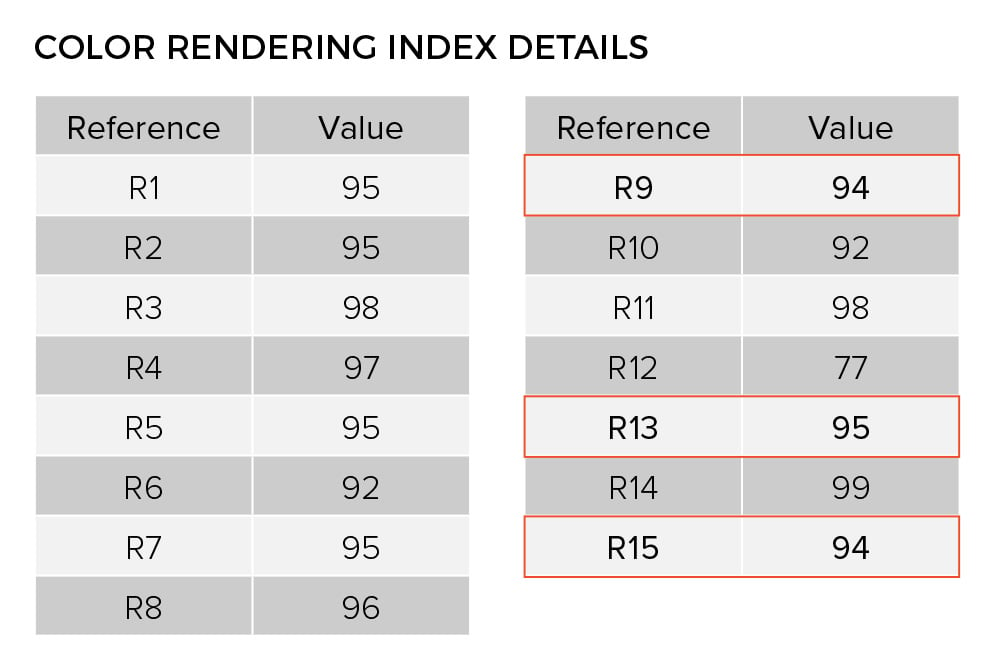
Example of R-value table for lighting products
Referring to the chart above, if a light source does not have much red content but a lot of blue and green – common in LED sources – then your blood, and hence your skin, may take on a greenish tone. Interesting side note here: sea water filters out red, so if you are diving at deep levels and cut yourself your blood will actually look green.
We’ve talked a lot about R9, but there are two other R-values of significant importance to cosmetics retailers: R13 and R15. These two colors are often associated with different skin tones and as above, a light source lacking the ability to render these colors well may make your customers look unhealthy…or even worse…
What's Important For You To Know
To make your customers look healthy, you should use illumination that contains plenty of red, technically identified as “R9” as well as other skin tone colors, “R13” & “R15”. Your lighting supplier should be able to provide you with this information.
5. Store Acoustics Affect Sales (significantly): Acoustic Lighting is a Thing…and it Works!
- Julian Treasure
Julian Treasure is a sound and communications expert whose TED talks have been viewed over 100M times. He references studies showing that the right “soundscape” in a retail store can increase sales up to 38%.

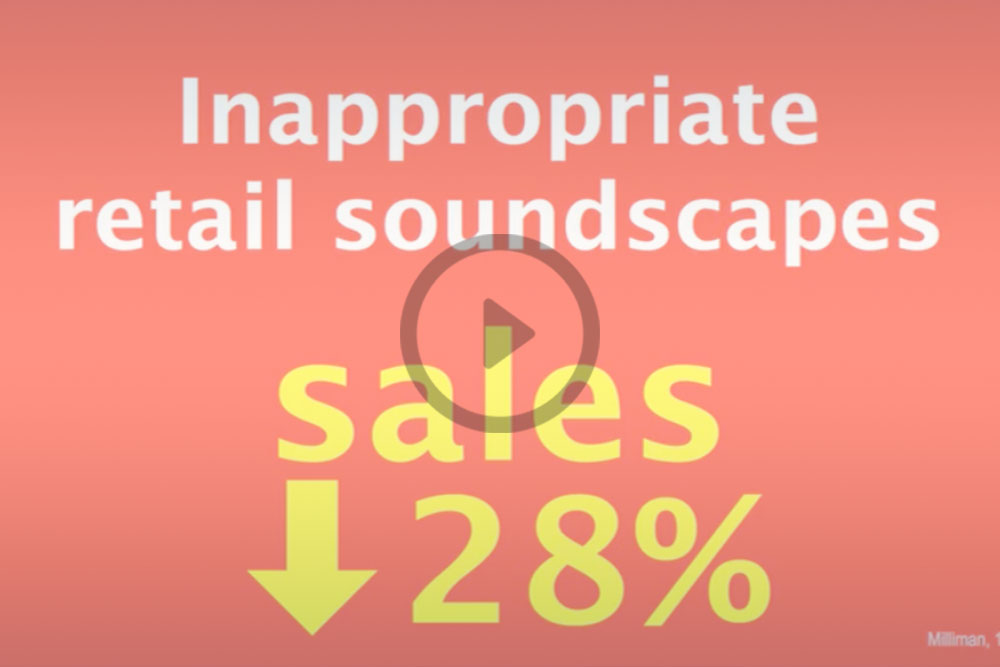
Conversely, inappropriate soundscapes filled with unwanted noise can decrease sales by 28%. Clearly, acoustic design can have a significant impact on the bottom line.
Acoustic Lighting has evolved from fuzzy, decorative light fixtures to large scale luminous ceilings and fixtures featuring “true acoustic performance” that can be used in place of passive acoustic panels. It is now possible to solve two design problems with a single solution that delivers immersive illumination and helps you ensure your soundscape is working for you and not against you.
AND… you get the acoustic benefits at virtually no extra cost. You have to illuminate your store, so instead of spending extra money on passive acoustic materials you can purchase Acoustic Lighting products that have noise reduction capability built in.
What's Important For You To Know
Unwanted sound (e.g. noise) can have a dramatic negative impact on sales. Acoustic Lighting products are available that fulfill all of the lighting needs we’ve discussed AND have the ability to reduce or replace the acoustic materials in your space.
6. Sustainable Lighting is Something You Can (should) Measure
As a brand in an industry where your customers have raised sustainability to the top of their list of demands, you are probably already committed to sustainable sourcing for your products. But what about the companies building and outfitting your retails stores?
Google “sustainability ratings” and you will find a dizzying array of companies offering sustainability ratings. Many are focused on providing ESG ratings and guidance to investors and offer risk assessments.
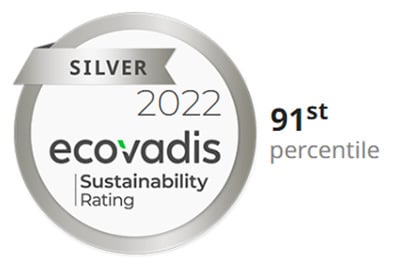
You need a quick and accurate way to assess your suppliers – not an investment recommendation. For that purpose, you may be better off relying on the ratings of companies that assess the companies you work with at a detailed level and provide a simple score that lets you know immediately whether they fit your requirements.
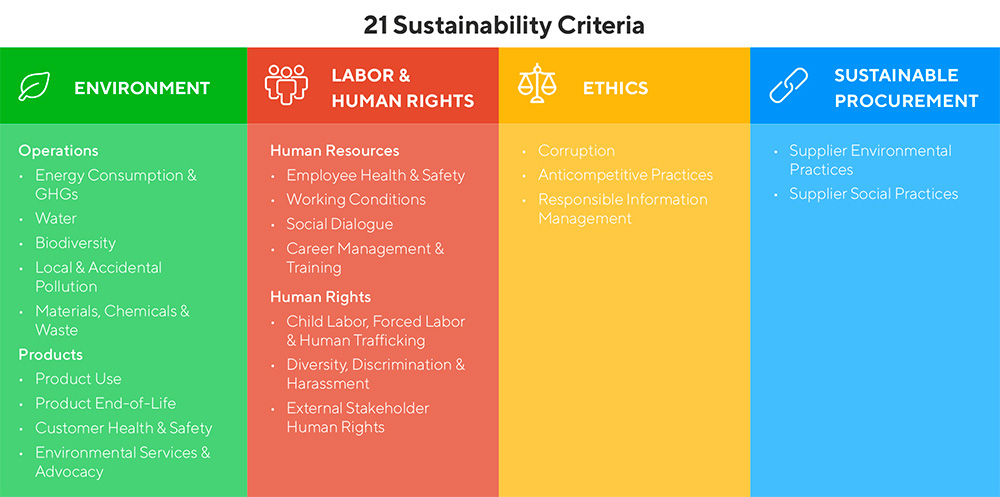
Many lighting manufacturers are now being assessed by these third party organizations and so an easy check is simply to ask if your lighting supplier has a rating and what their score is.
What's Important For You To Know
An easy way to check the sustainability credentials of your lighting supplier is to ask about their score as determined by a 3rd party assessment service.
By incorporating the 6 most important aspects of lighting into your retail stores you are well on your way to making your customers and products look better. The next step is to talk to a company that can deliver on every point...
Cooledge has helped many of the world's most successful brands deliver a better customer experience in their retail stores. Our products are all about creating immersive illumination that encompass a range from complete luminous ceilings with supplemental lighting installed in your stores and integrated with your rollout plans to large area acoustic light fixtures, or lighting systems when you have illuminated features made with a variety of materials to enhance or define your brand.
We are passionate about good lighting and would love to talk to you about your plans and how we can help ensure you have the best possible illumination in your retail spaces.